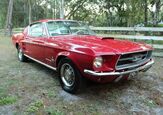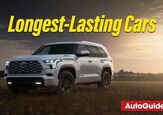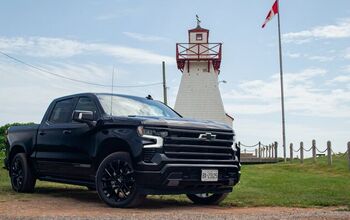2026 Jeep Gladiator Off-Road Review: Testing the Limits

Bobcaygeon, ON - What is the Jeep Gladiator? Is it a Wrangler, a pickup truck, or something entirely different?
The short answer is a bit of all three. Although the brand claims the Gladiator is 100% Jeep and 100% Truck, it does wander in the grey area somewhere between the two. The most important question though is, can it off-road? By that, we mean properly off-road. Not some dirt roads and rutted pathways, but more like unmaintained snowmobile trails with rocks the size of small SUVs.
Quick Take
The Jeep Gladiator is part Wrangler and part pickup truck. The brand states its 100% truck and 100% Jeep. We always knew it would be good off-road, but with it's extra length, could it keep up to the Wrangler?
After a day wheeling on the trails in central Ontario, we can state that it does have some drawbacks, but the off-road truck is well suited for just that - off-roading.
History Class is in Session
All Jeeps are capable off-road. It’s sort of the brand’s thing. The soon-to-be-refreshed Grand Cherokee and Grand Wagoneer are not out of place in the dirt. The upcoming all-new Jeep Cherokee and Recon should be some of the most capable mainstream smallish SUVs. But the Wrangler and Gladiator are easily the most capable. They’re the heart and soul of the brand, with a long history.
It's common knowledge that the original Jeep stems from the World War II Willys MB. What might not be known though, is that the first Jeep pickups arrived in 1947, with the Gladiator name first used in 1962.
Even after all these years, the basic formula for the Wrangler and Gladiator has not changed. They still feature solid front and rear axles with a two-speed transfer case. The manufacturer states it’s old school, off-road authentic.
It Was in Bobcaygeon
To demonstrate just how authentic these two SUVs are off-road, Jeep invited us to an event near Bobcaygeon, Ontario. For those unfamiliar, the small town is located about 2 hours northeast of Toronto, planted firmly in the Canadian Shield, which is the name given to a unique, uncompromising rocky terrain. From there, we headed further north onto the fire access roads and snowmobile trails that wander through the vast forests, circumventing an endless array of lakes.
Jeep brought along a gaggle of off-roaders to showcase, but I stuck to the two Gladiators on hand: the Rubicon and Mojave. Both were bone stock, equipped with the V6 engine.
The Long and Short of It
For years I have driven various Gladiators, summarizing that it is easily one of the most capable pickup trucks off-road, but unsure just how capable due to its long wheelbase and sizable rear overhang.
For reference, a Jeep Wrangler has a wheelbase of 96.8 inches (2,460 m) for the 2-door, or 118.4-inches (3,008 mm) for the 4-door. The Gladiator stretches things out 137.3 inches (3,487). Having all that extra space between the axles means the truck’s breakover angle is 20.3 degrees on the Rubicon or a slightly better 20.9 degrees on the Mojave. The Wrangler Rubicon, wearing the same size tires, gets 22.6 degrees on the 4-door and a massive 27.8 degrees with the 2-door.
With the rear overhang, things are worse. The Gladiator has almost an extra foot hanging out behind the rear axle; 50.1-inches (1,296 mm) compared to the Wrangler’s 40.8-inches (741.6 mm). This creates a departure angle of 25.5-26.0 degrees for the Gladiator compared to the Wrangler’s 37 degrees with all equipment equal.
Competitors
- Chevrolet Colorado Trail Boss
- Ford Ranger Raptor
- Toyota Tacoma Trailhunter
Relating to the Real World
So, what does this all mean? Simply, the Gladiator cannot drive up and over as large of objects as the Wrangler, nor can it climb at as steep an angle. The one area it is on par is the approach angle, as both vehicles more or less share the same front end.
To help protect the truck, Jeep equips all Gladiators with a fuel tank and transfer case skid plate. As well, both the Rubicon and Mojave come with a front skid plate, and our testers had the cab and bed rock rails.
These were all put to use during our day of driving. While climbing over some steeper rock shelves, the Gladiator would bottom out with a high-pitched screech as the metal plate dragged across the rock. The long bed would also touch ground on occasion, but the trailer hitch mount took most of the impact. Regardless of what we attempted to tackle, and the crunching noises that ensued, the truck never got stuck, nor damaged any important bits.
The Differences Between Rubicon and Mojave
The Mojave and Rubicon are the two most capable versions of the Gladiator. They share the top rung of the truck’s trim structure, intended for different tasks. The Rubicon is meant for the rock-climbing, mud-trekking type of adventure we were on. The Mojave is more at home bombing across a sandy desert landscape, but still wholly capable in this environment.
Both versions come with Dana 44 heavy-duty front and rear axles, locking rear differentials, 4.10:1 rear gear ratios, and 285/70R17 all-terrain tires. The Rubicon also includes a locking front differential, sway-bar disconnect, and the Rock-Trac NV241 OR part-time shift-on-the-fly transfer case. The Mojave counters with FOX internal bypass, external reservoir shocks, FOX front hydraulic jounce bumper, and the Command-Trac NV241 part-time shift-on-the-fly transfer case.
Crawling Characteristics
The Mojave has a slight ground clearance advantage over the Rubicon, with 11.6-inches (295 mm) of total height versus 11.1-inches (282 mm). On our drive, the differences were never overly noticed, as attack angle, driving line, and speed ultimately mattered more in terms of the truck’s skid plates touching bottom rather than any ground clearance discrepancy.
Having had a torrential downpour the night before, the trail was very slick and muddy. While climbing some of the more vertical rocky sections, the Rubicon’s locking front differential was a handy tool in climbing smoothly and with greater ease. It also aided in getting the Gladiator off of objects when it bottomed out or became beached. In fact, it’s incredible what the truck is capable of, slithering across, dragging its belly, but continuing forward. The Mojave was still able to scamper up and across these obstacles as well, it just involved a bit more precision from the driver to keep up momentum.
The area where we noticed the largest difference between the two Gladiator trims while doing advanced off-roading is ride comfort. Although the Mojave’s FOX set-up is meant for high-speed sand dunes, at 1 mph, climbing jagged obstacles, it absorbs impacts and undulation much better. Even with the Rubicon’s front swaybar disconnected, we found the Mojave didn’t want to bust our kidneys nearly as much. On the road, the ride quality of the Mojave is also noticeably better.
Off-Roading Canadians Rejoice
Pricing for the 2025 Jeep Gladiator in the United States starts at $39,995 (all prices include destination charges). The Mojave and Rubicon are priced the same, both starting at $52,995. As of this writing, 2026 Gladiator pricing has not been announced in America.
In Canada, however, it has, and what a nice surprise we Canucks get. For the 2026 model year, pricing has been slashed dramatically in some instances. The Sport S has had its price cut by $10,900, now starting at $52,290. The Willys gets the biggest price cut, now $11,400 cheaper, while the Rubicon and Mojave both drop by $8,100. That puts the two off-road specialists at a starting price of $64,995 in Canada.
The Verdict: Jeep Gladiator Off-Road Review
After a day of wheeling in the woods, I came away impressed with the Gladiator, but for reasons I wasn’t expecting. It lives up to the off-road prowess Jeep promises, albeit a bit short of the Wrangler. What really stood out to me is how easy this longish truck is to maneuver in these conditions and the amount of abuse the underside can take without missing a beat.
I already preferred the Gladiator Mojave for on-road driving, and after piloting it back-to-back with the Rubicon on these trails, it’s easily the one I would get. Even out of its element, its capabilities are so close to the Rubicon’s, we barely noticed a difference, all while having the better overall ride experience.
Honestly, our trip involved higher off-roading capability than most owners will ever take their shiny new Gladiators on. But, if the circumstances or mood strike them right, it’s good to know these old-school beasts are wholly capable for the task.
Become an AutoGuide insider. Get the latest from the automotive world first by subscribing to our newsletter here.
Category | Jeep Gladiator Mojave |
|---|---|
Engine: | 3.6-liter V6 |
Output: | 285 hp, 260 lb-ft |
Drivetrain: | 4X4 |
Transmission: | 8AT |
Fuel Economy (mpg): | 17 city, 22 highway |
Fuel Economy (L/100 km): | 13.7 city, 12.3 highway |
Ground Clearance: | 11.6-inches |
Starting Price USA: | $52,995 (incl. dest.) |
Starting Price Canada: | $64,995 (incl. dest.) |

A 20+ year industry veteran, Mike rejoins the AutoGuide team as the Managing Editor. He started his career at a young age working at dealerships, car rentals, and used car advertisers. He then found his true passion, automotive writing. After contributing to multiple websites for several years, he spent the next six years working at the head office of an automotive OEM, before returning back to the field he loves. He is a member of the Automobile Journalists Association of Canada (AJAC), and Midwest Automotive Media Association (MAMA). He's the recipient of a feature writing of the year award and multiple video of the year awards.
More by Mike Schlee







































Comments
Join the conversation
Thanks for the review, Mike. I use my Gladiator Rubicon to pull a trailer carrying a Kubota tractor through decommissioned logging roads in Northern Ontario. The break-over angle is the weak link, but the Gladiator's prowess clearly surpasses that of my previous pick-ups (Ram 1500, Frontier, F-150). (And I was lucky enough to find a 2020 Gladiator Rubicon with a 6-speed.)